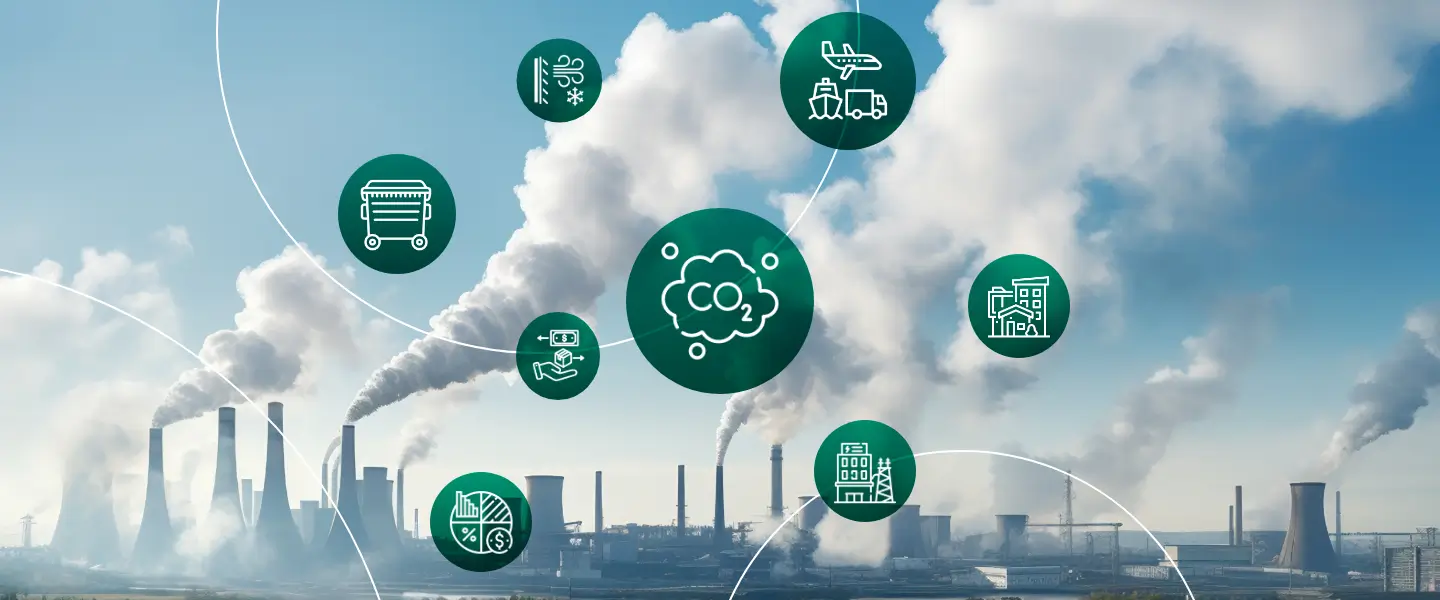GHG Reporting: A Crucial Step Toward Climate Accountability

As global awareness of climate change intensifies, the pressure on governments, industries, and businesses to take meaningful action has never been higher. One of the most essential tools in the fight against climate change is Greenhouse Gas (GHG) reporting. This process involves measuring, documenting, and disclosing the amount of greenhouse gases emitted by an organization, product, or process. More than just a compliance task, GHG reporting is becoming a critical business practice that promotes transparency, accountability, and strategic planning.
What is GHG Reporting?
GHG reporting refers to the process of calculating and reporting greenhouse gas emissions associated with an organization’s operations. These emissions are typically expressed in terms of carbon dioxide equivalents (CO₂e) to account for different types of gases that have varying global warming potentials.
The main greenhouse gases include:
- Carbon dioxide (CO₂)
- Methane (CH₄)
- Nitrous oxide (N₂O)
- Hydrofluorocarbons (HFCs)
- Perfluorocarbons (PFCs)
- Sulfur hexafluoride (SF₆)
- Nitrogen trifluoride (NF₃)
GHG emissions are typically categorized into three scopes:
- Scope 1: Direct emissions from owned or controlled sources (e.g., fuel combustion, company vehicles).
- Scope 2: Indirect emissions from the generation of purchased electricity, steam, heating, and cooling.
- Scope 3: All other indirect emissions across the value chain (e.g., business travel, product use, supply chain activities).
Why is GHG Reporting Important?
- Regulatory Compliance
Many countries and regions are introducing mandatory climate-related disclosures. For example, the EU Corporate Sustainability Reporting Directive (CSRD) and SEC proposed climate disclosure rules in the U.S. require large businesses to report their GHG emissions. Failing to comply can result in legal penalties, fines, and reputational damage.
- Transparency and Accountability
Transparent GHG reporting helps stakeholders—including investors, customers, and employees—understand a company’s climate impact. It signals commitment to environmental responsibility and aligns with growing demands for Environmental, Social, and Governance (ESG) transparency.
- Risk Management
Understanding emissions sources allows companies to assess risks related to climate change, such as carbon pricing, supply chain disruptions, and physical risks (e.g., floods, heatwaves). This enables better strategic decision-making and resilience planning.
- Cost Savings and Efficiency
Through reporting, businesses often identify energy inefficiencies or areas of excess consumption. Addressing these not only reduces emissions but can also lead to significant cost savings through energy optimization and process improvements.
- Competitive Advantage
Companies with strong environmental credentials often outperform competitors. GHG reporting can help attract eco-conscious customers, investors, and partners, contributing to long-term brand value and sustainability leadership.
How to Start GHG Reporting
- Set Boundaries
Determine the organizational and operational boundaries for your report. Will you include subsidiaries? What emission sources will be included under each scope? This ensures consistency and comparability.
- Choose a Reporting Standard
Adopt a recognized framework to ensure your reporting is credible and aligned with global expectations. Common standards include:
- The GHG Protocol: Widely used for corporate GHG accounting and reporting.
- ISO 14064: International standard for quantifying and reporting GHG emissions and removals.
- CDP (formerly Carbon Disclosure Project): Platform for disclosing environmental impacts to investors.
- Collect Data
Gather data on energy consumption, fuel use, transportation, production processes, and other relevant activities. Data quality is essential for accurate reporting, so use verified sources whenever possible.
- Calculate Emissions
Use emission factors (often provided by national environmental agencies or the GHG Protocol) to convert activity data into CO₂e emissions. Many organizations use carbon accounting software to streamline this process.
- Verify and Disclose
For added credibility, consider third-party verification of your GHG report. Then, disclose your results in your annual sustainability report, website, or regulatory filings. Transparency builds trust and shows stakeholders that you’re committed to action.
Challenges in GHG Reporting
While essential, GHG reporting comes with challenges, including:
- Data Gaps: Especially for Scope 3 emissions, which involve suppliers and product use.
- Lack of Internal Expertise: Many organizations struggle to find staff trained in carbon accounting.
- Changing Regulations: The regulatory landscape is rapidly evolving, requiring organizations to stay up to date.
- Technology Integration: Managing emissions data across multiple platforms and departments can be complex.
However, these challenges are being addressed with the rise of reporting software, consulting services, and training programs focused on climate data and ESG compliance.
Conclusion
GHG reporting is no longer a niche environmental practice—it’s a fundamental part of doing business in the 21st century. As climate risks intensify and sustainability expectations rise, companies that understand and manage their carbon footprint will be better positioned for success. Whether you’re driven by regulation, reputation, or responsibility, starting your GHG reporting journey is a step toward a more transparent, resilient, and low-carbon future.
ㅤ ㅤ ㅤ ㅤ ㅤ ㅤ ㅤ ㅤ ㅤ ㅤ ㅤ ㅤ ㅤ ㅤ ㅤㅤ ㅤ ㅤ ㅤ ㅤ ㅤ ㅤ ㅤ ㅤ ㅤ ㅤ ㅤ ㅤ ㅤ ㅤ








